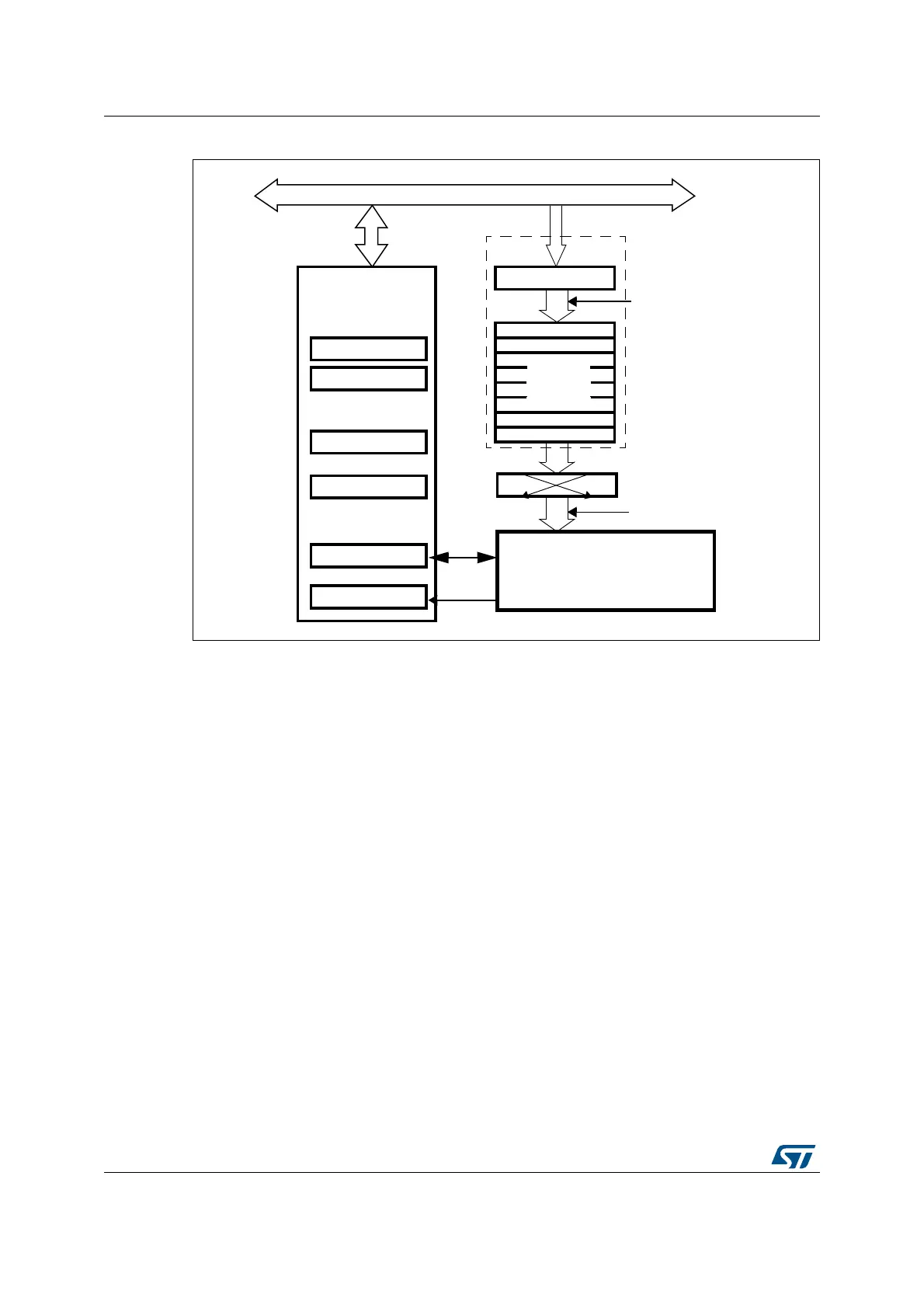Hash processor (HASH) RM0090
774/1749 RM0090 Rev 18
Figure 234. Block diagram for STM32F43xxx
The FIPS PUB 180-2 standard and the IETF RFC 1321 publication specify the SHA-1, SHA-
224 and SHA-256 and MD5 secure hash algorithms, respectively, for computing a
condensed representation of a message or data file. When a message of any length below
2
64
bits is provided on input, the SHA-1, SHA-224 and SHA-256 and MD5 produce
respective a 160-bit, 224 bit, 256 bit and 128-bit output string, respectively, called a
message digest. The message digest can then be processed with a digital signature
algorithm in order to generate or verify the signature for the message. Signing the message
digest rather than the message often improves the efficiency of the process because the
message digest is usually much smaller in size than the message. The verifier of a digital
signature has to use the same hash algorithm as the one used by the creator of the digital
signature.
The SHA-1, SHA-224 and SHA-256 and MD5 are qualified as “secure” because it is
computationally infeasible to find a message that corresponds to a given message digest, or
to find two different messages that produce the same message digest. Any change to a
message in transit will, with very high probability, result in a different message digest, and
the signature will fail to verify. For more detail on the SHA-1 or SHA-224 and SHA-256
algorithm, please refer to the FIPS PUB 180-2 (Federal Information Processing Standards
Publication 180-2), 2002 august 1.
The current implementation of this standard works with little-endian input data convention.
For example, the C string “abc” must be represented in memory as the 24-bit hexadecimal
value 0x434241.
A message or data file to be processed by the hash processor should be considered a bit
string. The length of the message is the number of bits in the message (the empty message
32-bit AHB2 bus
Hash / HMAC
SHA-1, SHA-224, SHA-256 and MD5
HASH_DIN
swa ppin g
16 × 32-bit
IN FIFO
HASH_CR
HASH_H0...H7
HASH_CSR0..53
context
digest
HASH_IMR
HASH_SR
Interrupt registers
Control register
Context swapping
Message digest
processor core
HASH_ST R
Start register
IN FIFO full
write into HASH_DIN
Control and status
registers
Data
register
or write DCAL bit to 1
or 1 complete block
or DCAL written to 1
IN buffer
transferred by the DMA
MS30442V1
